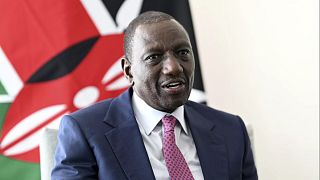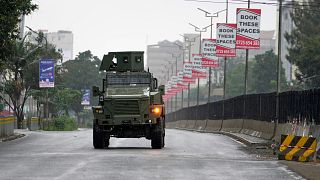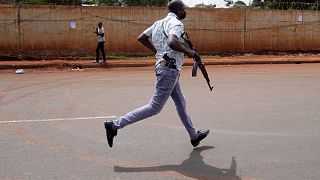Kenya
The rapid growth in technology has contributed to an increase in electronic waste (e-waste) generation in the last decade, which is affecting the environment.
E-waste is the world's fastest-growing domestic waste.
This is fuelled by the higher consumption rates of electric and electronic equipment, their short life cycle, and the fact that many items are not made to be repaired.
With an absence of robust laws to address the problem, African has become a dumping ground for electronic waste from Western countries.
According to the global e-waste monitor report of 2020, 53.6 million metric tonnes of e-waste were produced each year.
If left unchecked, this could double to 120 million tonnes by 2050.
Globally, only 17.4 per cent of e-waste is managed appropriately.
Kenya's annual electronic waste generation grew from 3,000 metric tonnes in 2012 to 51,000 metric tonnes in 2021.
Managing waste has been a huge challenge in Kenya.
Most of the e-waste ends up in landfills while others are recycled and properly disposed of by individuals or companies.
Godwin Ochieng is one of many who make a living by collecting electronic waste from dumpsites in Nairobi.
He repairs whatever items he can and resells them.
However, much of the waste cannot be reused and is burnt, he says.
"There are those that are total waste and are hazardous to the environment, when burnt they release poisonous gases. In the dumpsite, most of the waste is burnt, and the gases emitted especially from electronics is harmful," explains Ochieng.
Electronic Waste Initiative Kenya (EWIK) is a company that began its operations in 2015 by refurbishing damaged laptops and training the younger generations to recycle electronic waste.
George Kimani, a technician at EWIK, notes that many laptops are disposed of at the slightest malfunction.
"You realise that most of the laptops are disposed of because of minor problems like maybe they have broken cases,” he says.
EWIK collects such laptops, repairs them and sells to the less fortunate at a lower price of 150 US dollars.
“We replace those casings then update the software and make them available for resale. Our laptops are mostly targeting the less fortunate in the community so we sell at a very cheap price," Kimani notes.
Climate change and growing e-waste are two of the biggest challenges in the world today.
E-waste emitted about 53% of greenhouse emissions into the atmosphere between 2014 and 2020.
This waste contributes to two-thirds of heavy metal toxins.
When these metals, such as mercury and lead, break down in the soil, they emit dangerous gases that are harmful to humans and the environment.
This has largely contributed to climate change, says Joseph Oliech, the project manager at Waste Electrical and Electronic Equipments (WEEE) Centre.
Oliech notes that, “you are seeing the effects of climate change all over, you are seeing public health issues all over. E-waste has a lot of toxic elements, there are thousands of rare metals in electronic waste and toxins.”
The WEEE Centre recycles and properly disposes of all types of e-waste.
They are involved in urban mining and the remanufacturing of e-waste to new equipment.
The centre dismantles electronic waste and harvests vital components used in recycling.
Victor Boiyo, Environmental Management and Governance expert adds that e-waste leads to climate change by accumulating hazardous substances in the environment.
“Some of these materials produce greenhouse gases which are responsible for the destruction of the ozone layer," he explains.
Lawrence Thuo, the founder of EWIK, realized that e-waste is a generational problem and thus set up a centre where he trains young people on how to recycle e-waste.
“We are training our students on how to manage their electronic waste in a sustainable way. This is by depolluting the environment and also adapting the circular economy on how best to handle the e-waste that is generated,” he says.
The horn of Africa is currently facing its worst drought in years due to the adverse effects of climate change.
The rains have consecutively failed for the sixth season.
The drought has led to an acute shortage of food, and rivers and wells have dried up.
According to the food security working group chaired by the U.N. Food and Agriculture Organization and the regional Intergovernmental Authority on Development, close to 23 million people are facing food shortages in Kenya, Somalia and Ethiopia.













01:01
Kenya: Visa-free travel now available for many African and Caribbean countries
01:26
Brazil elephant sanctuary welcomes its newest resident, rescued from a zoo in Argentina
00:22
Boniface Kariuki, a Kenyan mask vendor shot at close range laid to rest
11:17
Bridging the legal gap in Africa’s digital boom {Business Africa}
Go to video
First Malaria treatment for babies approved
02:16
Kenya's William Ruto faces growing discontent over economy and police brutality